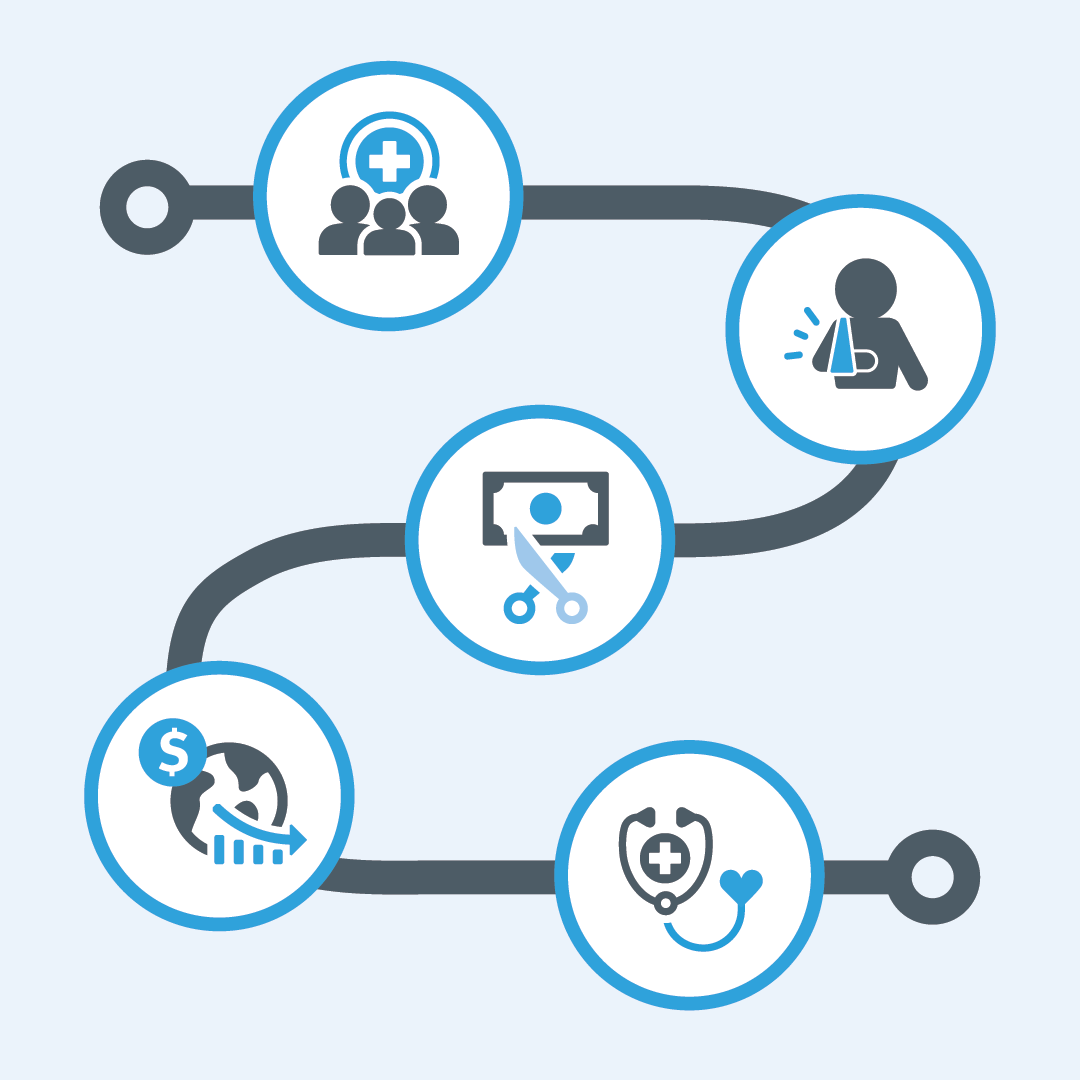
West Virginia’s Medicaid Coalition: The Bridge to the Middle Class
By Abby Bott,
08.02.2016
West Virginians for Affordable Health Care (WVAHC) formed a coalition, called “The Bridge to the Middle Class,” to support positive reforms in the state’s Medicaid expansion and head off any threats to the program.
I spoke with Terri Giles, WVAHC’s executive director, about the work of the coalition, their educational toolkit materials, and the program’s successes.
Families USA: When and why did The Bridge to the Middle Class begin?
Terri Giles, WVAHC: Starting in January 2014, West Virginia passed Medicaid expansion. In November of 2014, West Virginians elected a majority of Republicans to both the House of Delegates and the Senate for the first time in more than 50 years. We were concerned that the new Republican majority would not support full implementation of the ACA and Medicaid expansion.
For the 2015 legislative session, we organized a Medicaid coalition to monitor actions by the WV Legislature. That year, the governor fully funded Medicaid and there were no actions by the legislature against Medicaid. (Some pundits say that the new Republican majority was too focused on anti-labor legislation to do anything else that year.)
After the legislative session, we convened a meeting to determine if we should continue the coalition and if so, what the next steps should be. The organizations that had come together believed it was important to organize around Medicaid to support positive reforms in the program and head off any threats.
They also recommended developing a toolkit to educate legislators, local officials, and the general public about the value of the Medicaid program and Medicaid expansion.
The toolkit, funded with help from Families USA, is titled, “Medicaid: A Bridge to the Middle Class.” All toolkit documents are available on the WVAHC website.
In January 2016, we began touring the state to present information about Medicaid. We targeted health care providers, social service providers, and local officials (including county commissioners) to show them what Medicaid means to their counties. To date, the coalition has met with more than 1,000 people and continues to schedule presentations at statewide meetings and encourage groups to invite us to present at their meetings. We have also shared the information with legislators, and we continue to travel the state to make presentations.
The presentations are meant to help people understand Medicaid, the impact in their county, and the budget deficits that West Virginia is facing as a threat to Medicaid and the expansion.
To prepare for next year’s budget battles we are:
- In partnership with the Center on Budget and Policy Priorities, writing a policy paper on funding for West Virginia Medicaid and advocating for new dollars through provider assessments or other taxes
- Planning for a Medicaid Institute for legislators in the spring of 2017 – before budget negotiations begin
- Working with statewide public radio to air Medicaid issues
- Using more social media – Facebook and Twitter – to keep people informed
- Continuing to make educational presentations around the state and updating the Medicaid toolkit with the latest numbers
Families USA: You work with “strange bedfellows.” Who or what type of organizations have you partnered with to form this coalition?
Giles: In addition to the usual advocates, AARP, Healthy Kids and Families Coalition, social workers and nurses, we have reached out to the West Virginia Hospital Association, the State Medicaid Association, the West Virginia Primary Care Association, Catholic Charities and the West Virginia Council of Churches, the four Medicaid Managed Care Organizations (MCOs), and labor organizations.
Families USA: How have you reached stakeholders?
Giles: Reaching out to stakeholders is a labor-intensive effort. While some groups that we have worked with in the past came to the table as soon as we convened the coalition, others required one-on-one meetings with their leadership to persuade them about the threats to Medicaid and ask them to join us and become educated and prepared for action.
Families USA: Do you have any advice for other states than may be interested in starting a similar effort?
Giles: Put a lot of energy into coalition building. Meet personally with major stakeholders to get their buy-in and participation. Meet with the coalition quarterly. We started with monthly meetings but it was too much travel for people from other parts of the state. Use coalition meetings primarily for education and updates. Create a smaller steering committee for strategizing and planning. Meet with steering committee by phone.
“Bring the message and importance of Medicaid to the local level.”
—Terri Giles, E.D. WVAHC
- Bring the message and importance of Medicaid to the local level: Develop county-level materials of number of Medicaid beneficiaries and Medicaid expenditures.
- Develop materials stressing how Medicaid helps the economy and business. Publish materials on savings to the states in other programs because of Medicaid expansion. Do macro-economic analysis on job creation and multiplier effect of new federal Medicaid dollars.
- Build a story bank. This is hard and we haven’t been that good at it. However, we persevere.
- Consider the Medicaid coalition a long-term and ongoing effort: Not just to get an expansion or save it but to continue ongoing education and support using Medicaid as a system transformation vehicle.
- Partner with your state Center on Budget and Policy Priorities (CBPP) affiliate for research and Medicaid budget expertise.
We’re happy to see this effort on the ground in West Virginia. For more information on The Bridge to the Middle Class or on how Families USA can support your work, email us at contact@familiesusa.org.
Resources
Four-page brochure: “Medicaid: An Essential Program for West Virginia and its Residents”
Tri-fold brochure: “The West Virginia Medicaid Expansion is Good for West Virginia”
Chart developed by Families USA: “Top 9 occupations of the working West Virginia residents who can benefit from Medicaid expansion” (See charts for other states.)
Chart: “Medicaid Data by County” shows the total population of each county, the MAGI (Modified Adjusted Gross Income) population from the county, other Medicaid beneficiaries, total Medicaid beneficiaries by county, and percent of country population who receive Medicaid.




